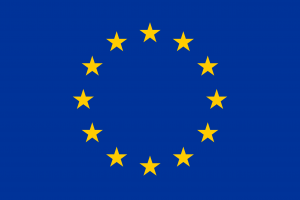The European Union's New Entry/Exit System Begins Operation on 12 October

As of 12 October, the European Union’s new state-of-the-art border management system – the Entry/Exit System (EES) – will begin operation and modernise the management of the EU’s external borders.
The introduction of new technology will ensure reliable data on border crossings and gradually improve the experience for travellers entering the Schengen area. It will replace the current system of manual passport stamping and enhance security with improved border checks, use of electronic records and biometric data.
The EES will process data at border crossings for travellers not holding the nationality of any EU Member State or the nationality of Iceland, Liechtenstein, Norway or Switzerland, travelling for a short stay (90 days within any 180-day period), each time they cross the external borders of any of the 29 European countries using the system.
Data that will be recorded includes the information listed in the travel document, the date and place of each entry and exit, as well as biometric data such as a facial image and fingerprints that will be collected by passport control officers the first time that travellers arrive at a border crossing point after EES starts operation. This information will be recorded in a digital file and will be verified on subsequent crossings.
The EES will ensure the highest standards of data and privacy protection. Records of entries/exits will be stored for three years from the date on which they were created, and individual files containing personal data will be stored for 3 years and 1 day from the date of last exit.
The EES will be deployed progressively over six months (from 12 October 2025 to 9 April 2026) allowing authorities, travellers, and carriers time to adapt to the new digital processes at the borders. Countries that use the system will thus be able to introduce different elements in phases, including the collection of biometric data. They could also fully or partially suspend operating the EES at certain border crossing in exceptional circumstances, for instance when traffic intensity would lead to very high waiting times.
Overall, with the implementation of the EES, travelling will become smoother and safer for all. Over time, border crossings will be faster and more seamless by reducing processing times, helping operators manage passenger flows more smoothly and reducing congestion at terminals.
Following the deployment of the EES, the European Travel Information and Authorisation System (ETIAS) is expected to become operational in the last quarter of 2026. This new system will also contribute to more efficient and faster border control procedures, less bureaucracy, fewer delays for travellers, better security, and more efficient border management procedure in general.
ETIAS does not reintroduce visa-like obligations. Travellers from countries benefiting from visa-free travel to the EU, including those from Bosnia and Herzegovina, will continue to do so. Non-EU nationals who do not need a visa to travel to the Schengen area will apply for a travel authorisation prior to their trip through a simple procedure via the ETIAS’ website or app for mobile devices and will pay a fee, currently set at €20. Most of the applications will be processed within minutes. The granted ETIAS authorisation will be valid for three years or until the end of validity of the travel document, whichever comes first.
Detailed information about both systems can be found at the dedicated website travel-europe.europa.eu. The content of the website is overseen by the European Commission’s Directorate-General for Migration and Home Affairs, and it offers explanations of various aspects of the systems, their functioning, and answers to number of frequently asked questions that may be of interest for travellers.
